Diary Entry No 47 - A week in the Engadine - Part 2
Day 2 The Diavolezza and Piz Lagalp
On the second day we took the bus from Pontresina at 1805m up the valley to the Diavolezza station at 2093m, then cable car up to the Diavolezza at 2978m.
The Diavolezza cable car:
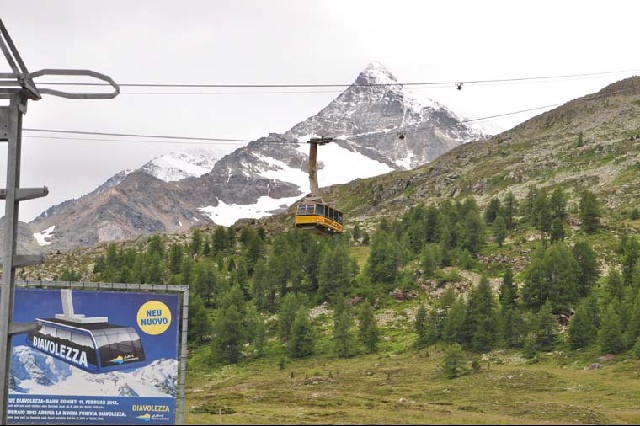
the view from the cable car going up
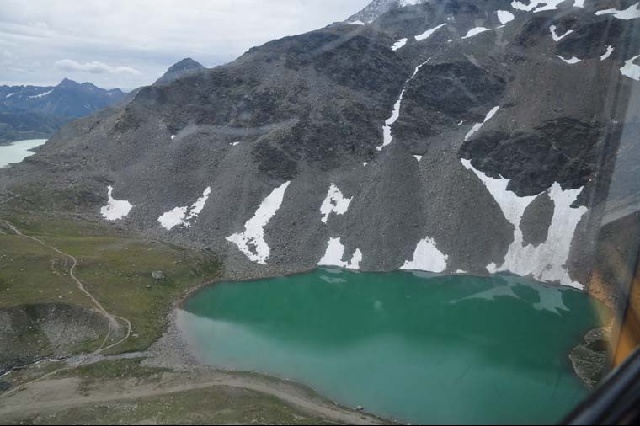
and when we finally reached the top 2978m (9770ft) we were able to see a range of snowy peaks around us. Ahead of us in the clouds is Piz Bernina at 4049m (13283ft) with fresh snow
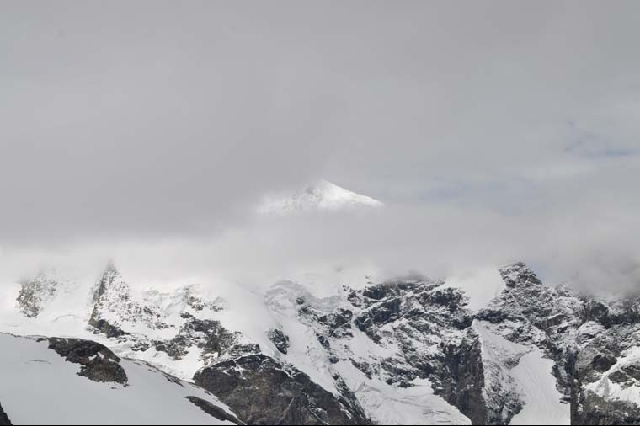
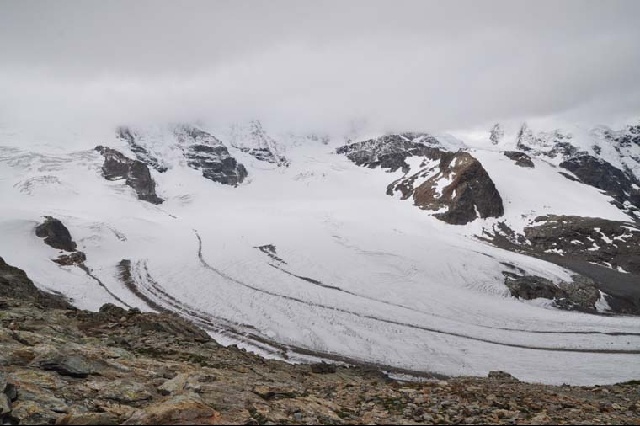
The Swiss lay on activities to suit all tastes. Firstly, not for the faint of heart – you could tackle the Klettersteig routes (Via Ferrata) - on this board was all the information you would need, including a picture of a rope bridge (I've blown that bit up to show the detail) - designed to scare all but the brave

Or, if that’s a bit too tough, there was a mountain top Jacuzzi – at nearly 10,000ft this must be one of the highest in the world
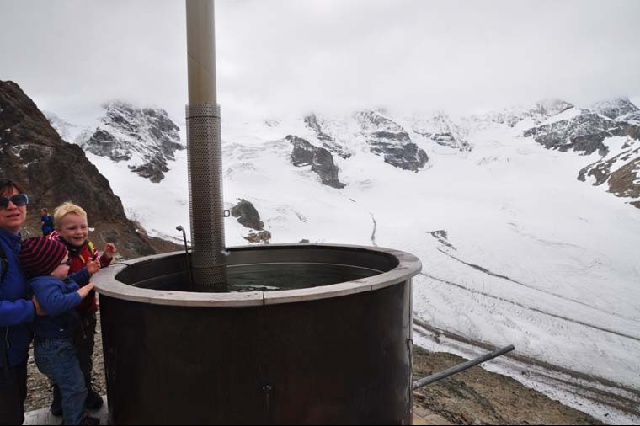
We didn’t indulge in either of these, as for us, the scenery, plants and wildlife are enough entertainment. The best bird of the day was a Snowfinch Montifringilla nivalis which was feeding off crumbs under the picnic tables.
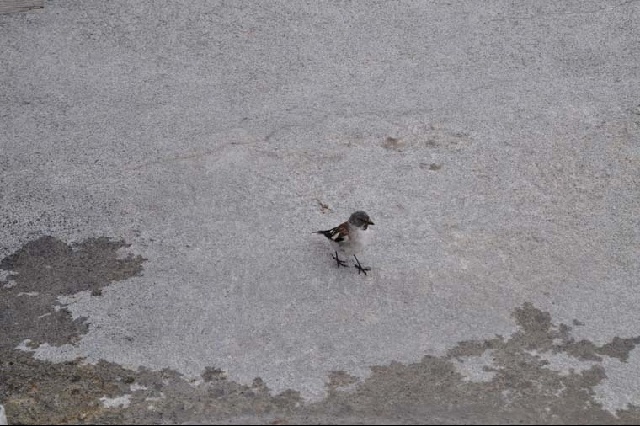
At this altitude we are bordering the permanent snow line, and the land not covered by snow was rough with various sizes of boulders and rock
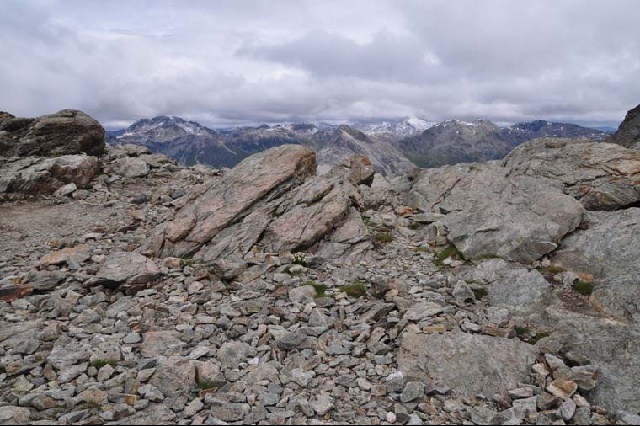
At this altifude, I was hoping for a few special plants, and was pleased to see large quantities of Ranunculus glacialis in good condition
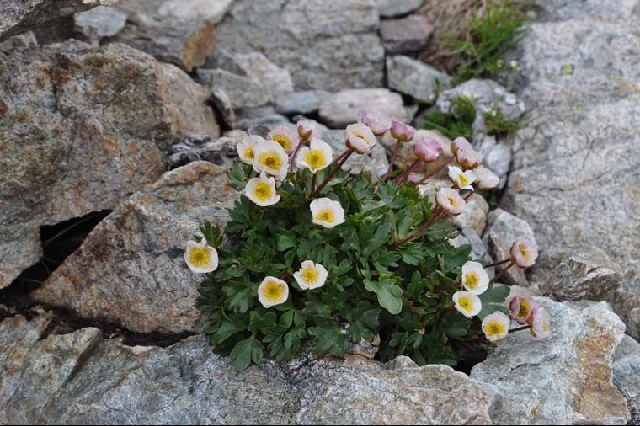
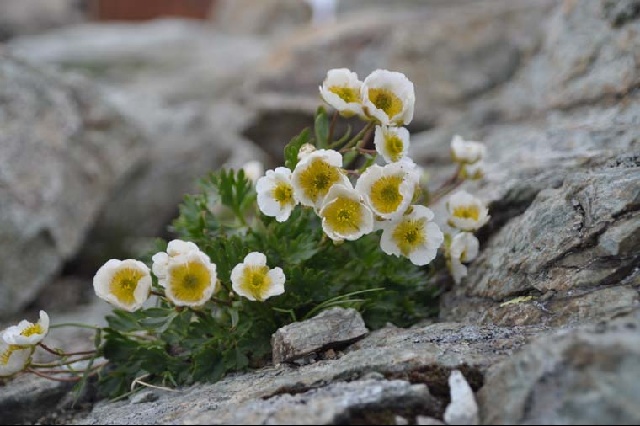
Another plant which can cope with the harsh conditions is Saxifraga exarata, shown here growing in rocky ground
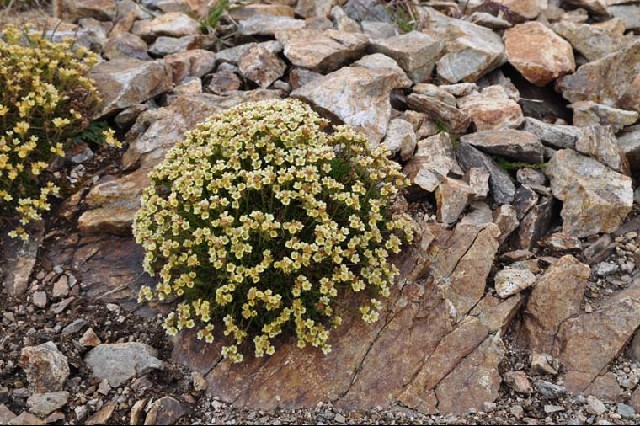
And here, Saxifraga bryoides taking advantage of a little protection from an overhanging rock
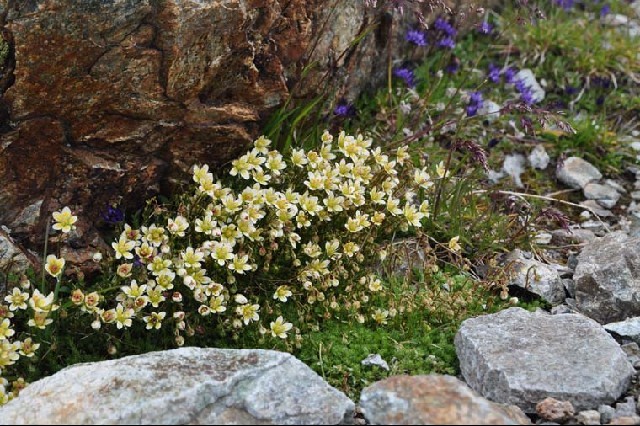
I'll just zoom into the plant growing alongside it, Phyteuma globulariifolium
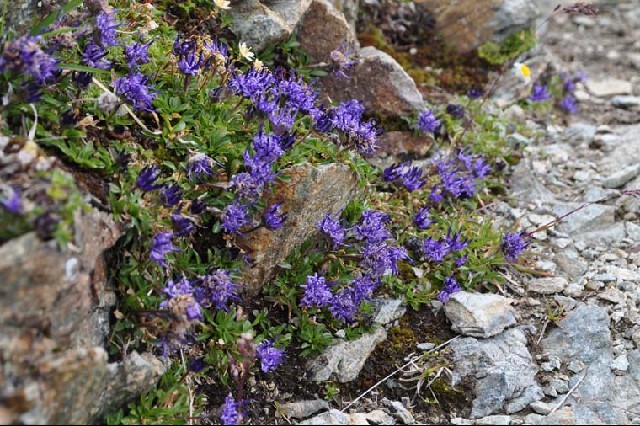
The other common plant at this site was Leucanthemopsis alpinum
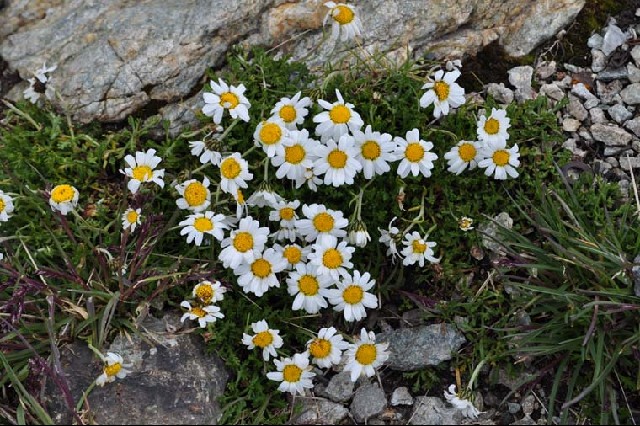
This is the view towards Piz Lagalp where we will walk later on
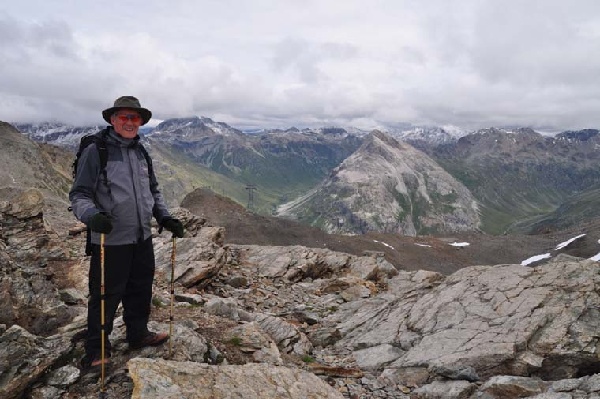
We took a short stroll along the path
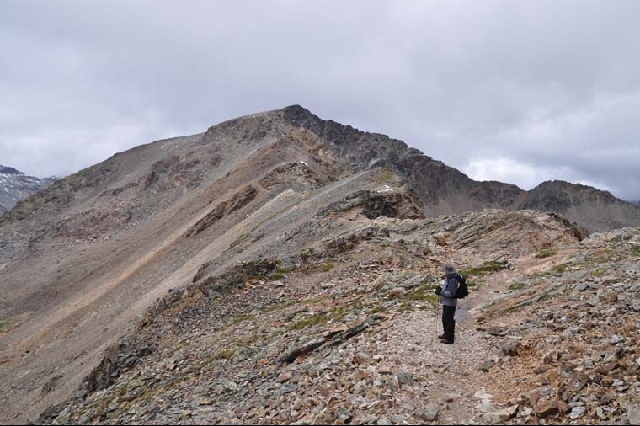
and through a patch of snow
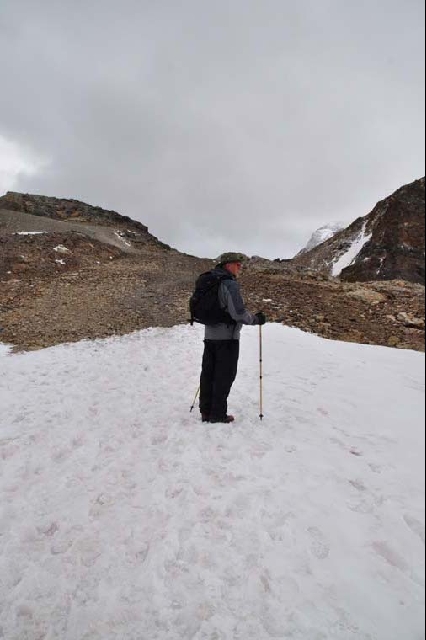
Then we decided to return down to the valley using the cable car
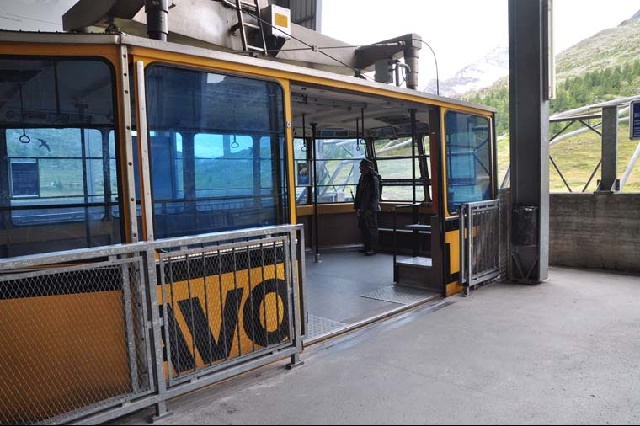
We then took the bus to the famous Bernina Hospice at 2329m, where you can stay the night or have a meal.
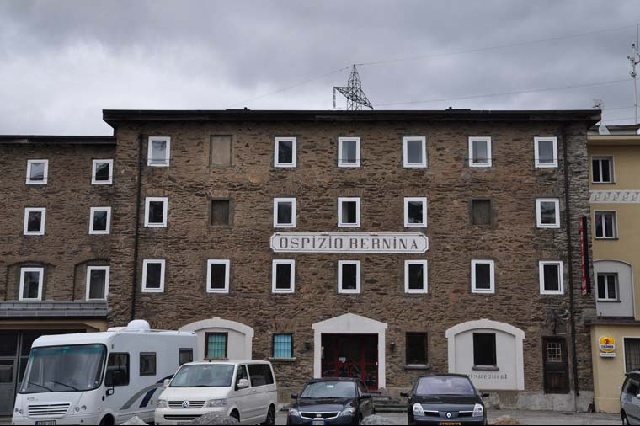
On the side of the Hospice, a line marks the snow levels in 1879 and 1986
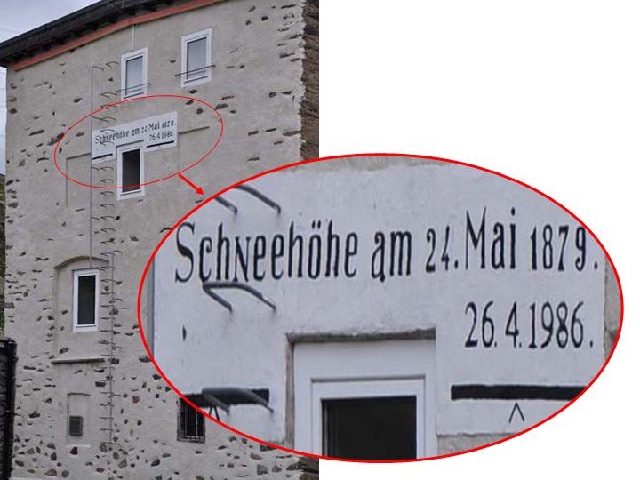
We walked from here along the lower slopes of the front of the Lagalp where the flowers were excellent
The Alpine clover, Trifolium alpinum
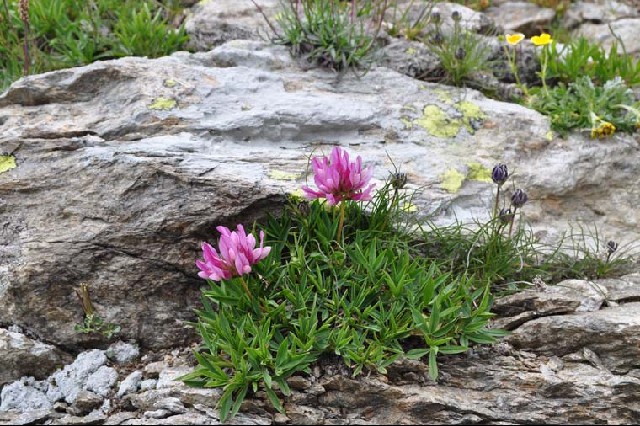
Saxifraga paniculata - extremely common in the area
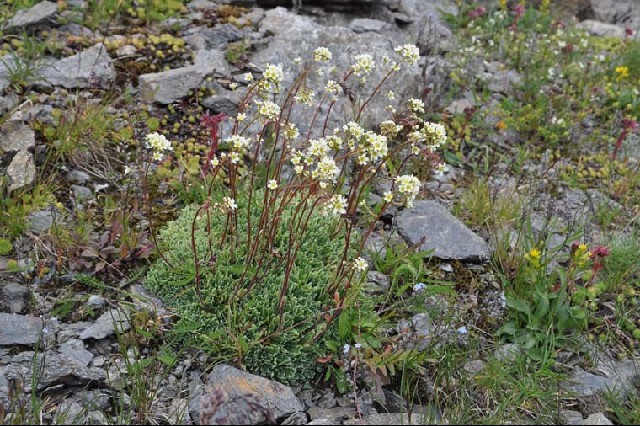
A very large patch of Achillea erba-rotta ssp moschata, (previously A moschata) with its characteristic leaf shape
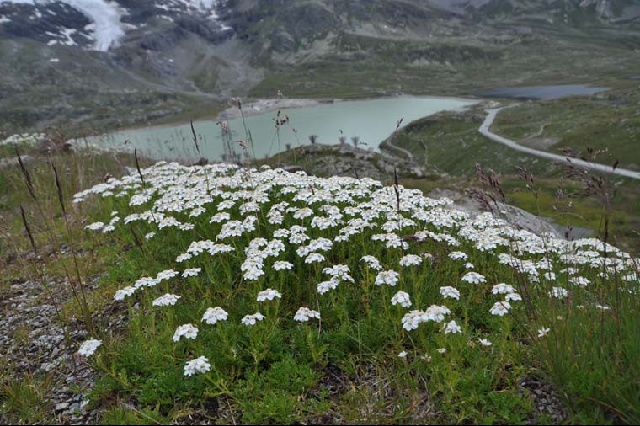
I find the Gentian verna group difficult to identify, I think this is Gentiana verna itself
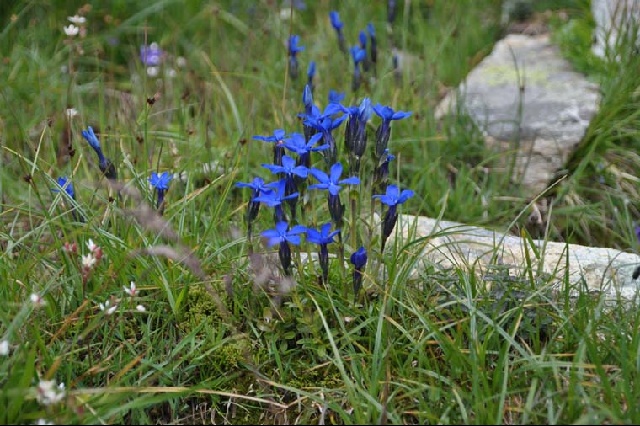
But no doubts about this, one of the commonest flowers in alpine meadows, Campanula barbata
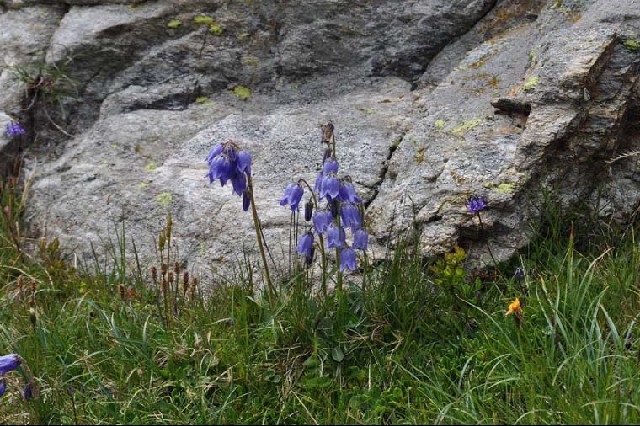
Natural crevice garden with Sempervivum montanum among others, taking advantage of the accumulation of humusy material in the crevices
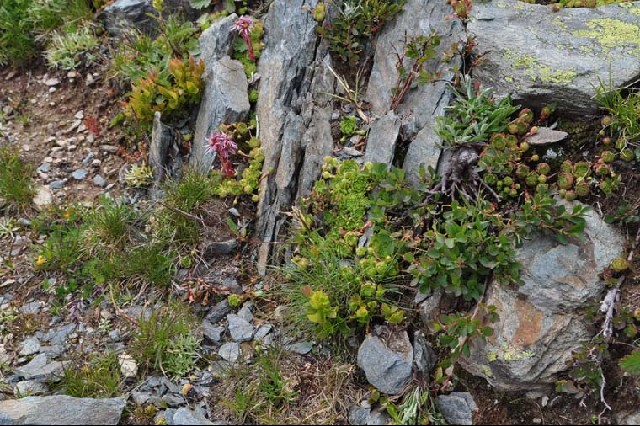
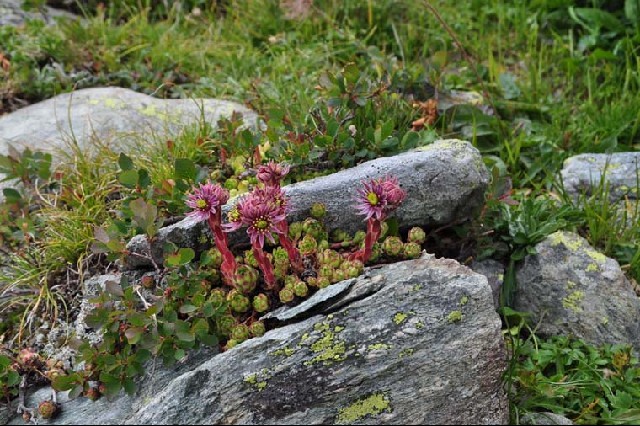
Saxifraga ?paniculata (not sure what this is) nestling under and between rocks
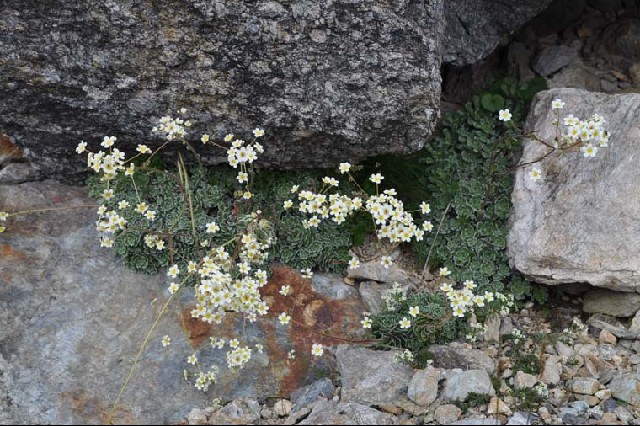
When we finally reached the valley, we walked to the train station to see the times of the next train and between the road and the station were damp meadows with large patches of Campanula cochlearifolia
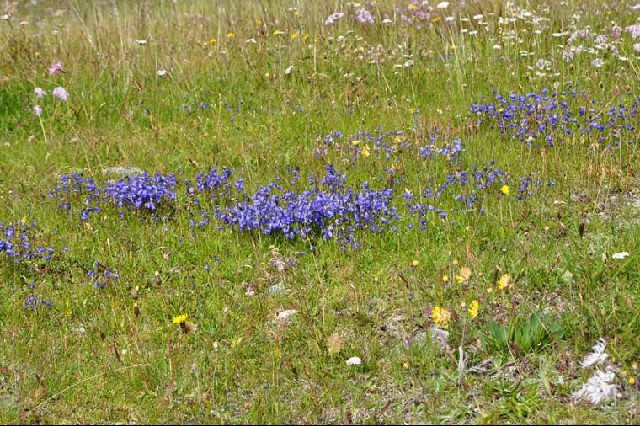
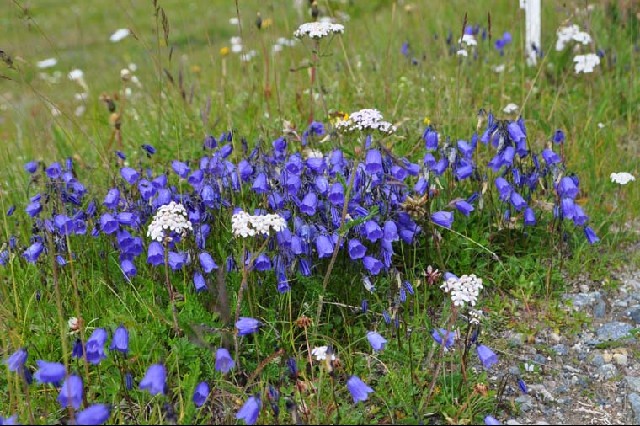
And our first sighting of a plant that we were later to realise was very common in the area, Dianthus superbus. I never think this plant lives up to its name, it always seems to look at bit ragged
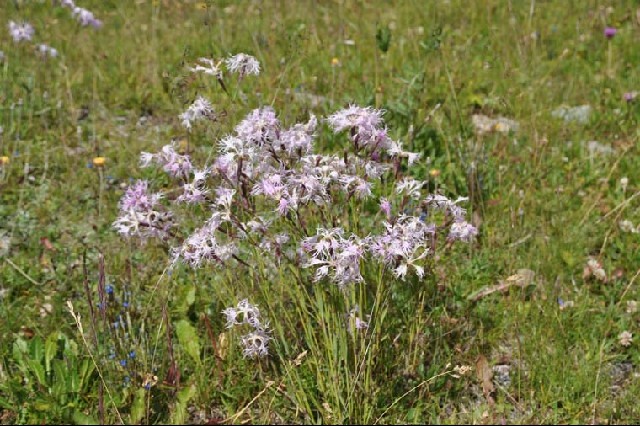
Another plant we were to see more of later, Gypsophila repens
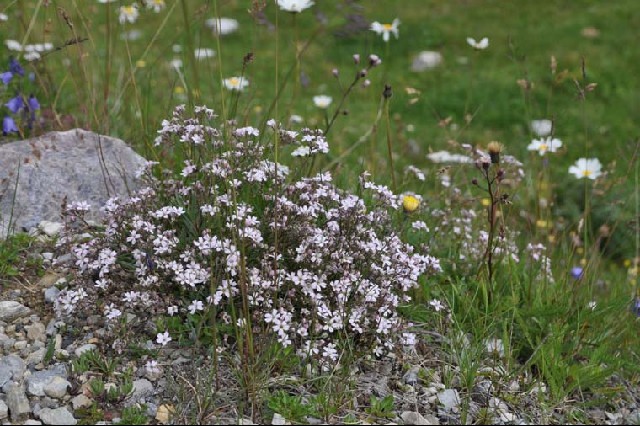
And finally on Day 2, a plant I was surprised to see here: Polemonium caeruleum
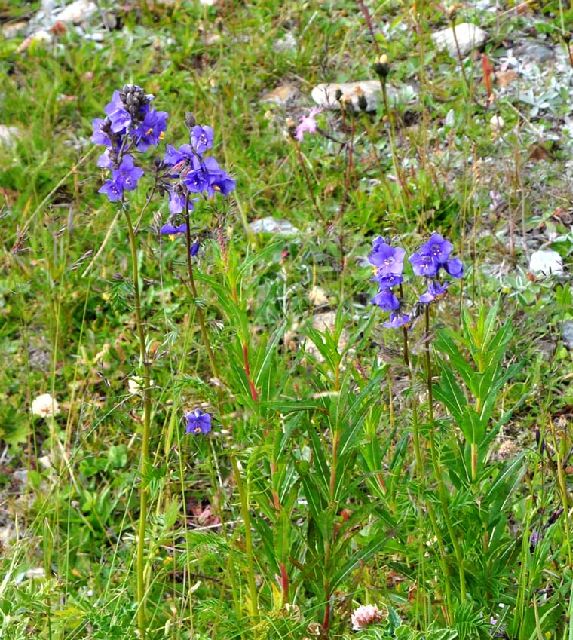
Day 3 Corvatsch and the Wasserweg
A good weather forecast, so we decided to do another high level cable car. We started with the bus from Pontresina at 1805m via St Moritz to Surlej at 1870m. Then we took the cable car from Sulej up to the middle station at Murtel, then cable car from Murtel to Corvatsch at 3303m (10836 ft), the highest point .
the view from the cablecar, today looking down on the lakes of the St Moritz valley
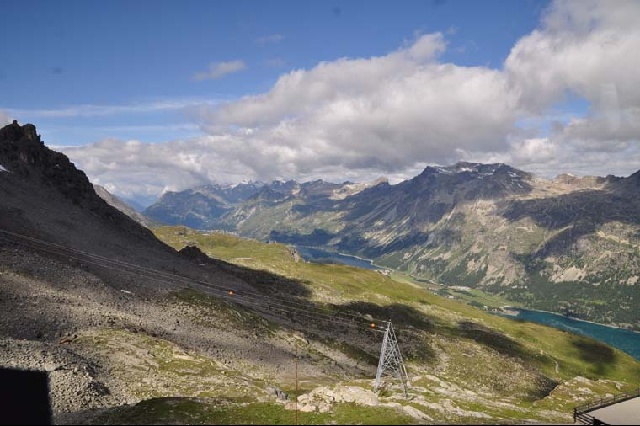
From the top of the cable car station, looking to the east
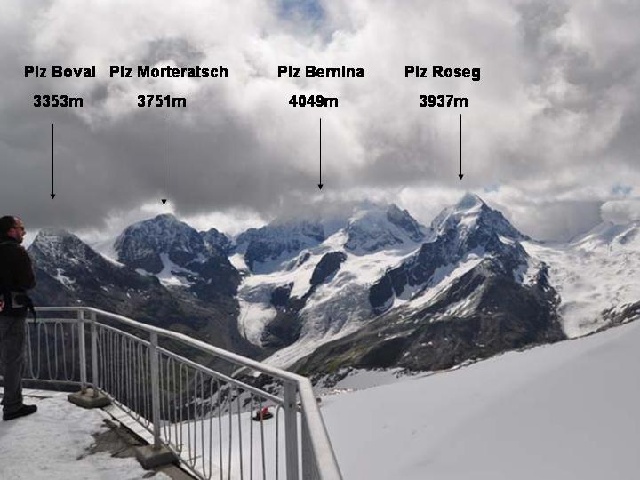
and to the south, the snow covered peaks of Piz Murtel 3433m and Piz Corvatsch behind it 3451m
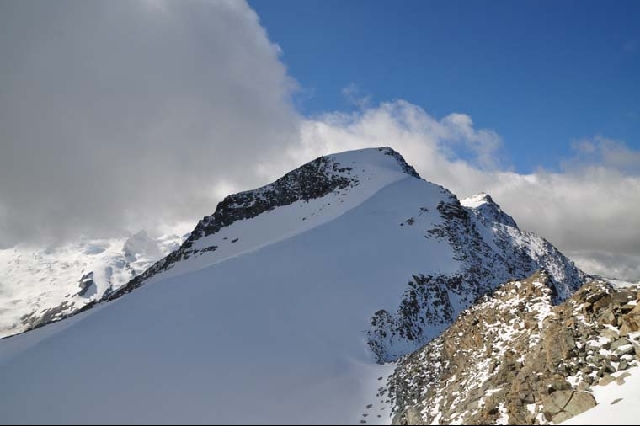
The view to the north and west was good, but we had hoped for less cloud as we had been told you can see the Matterhorn on a clear day – it must be out there somewhere
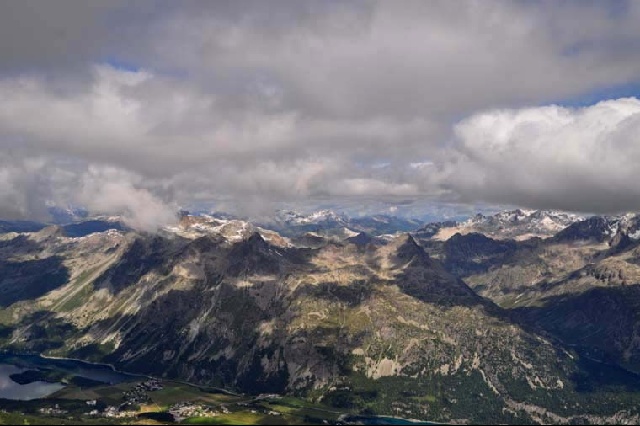
The only person walking at this altitude
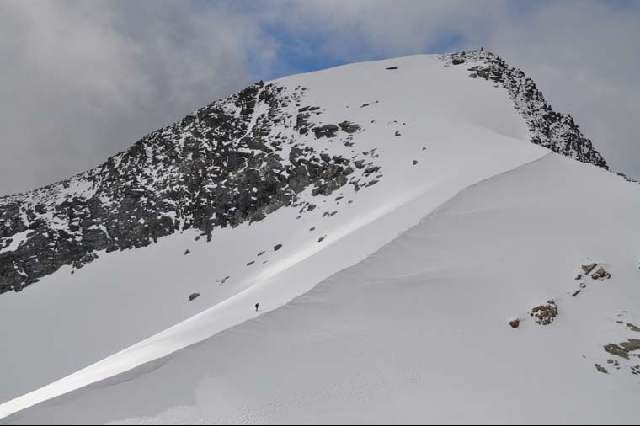
We didn't fancy that, so we went back down by cable car to the middle station at Murtel at 2702m, from where we walked via Rabguisa to Furtschellas at 2312m
Plants we saw on our way
Silene acaulis
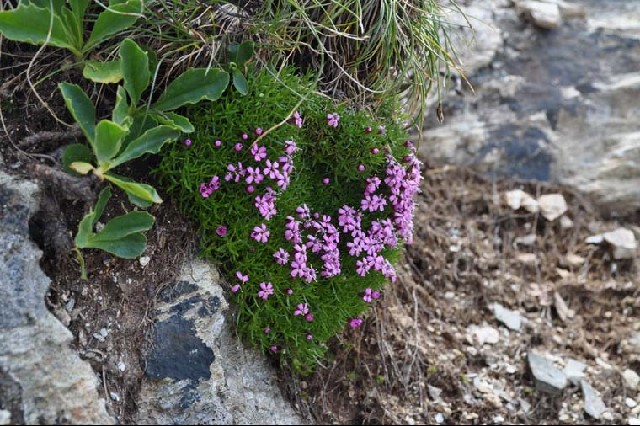
Saxifraga bryoides
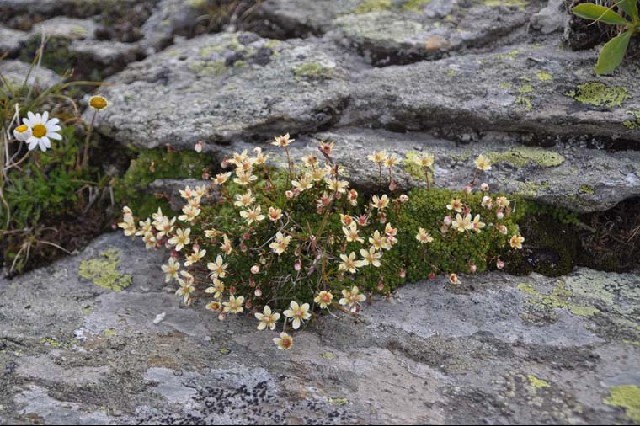
Doronicum austriacum
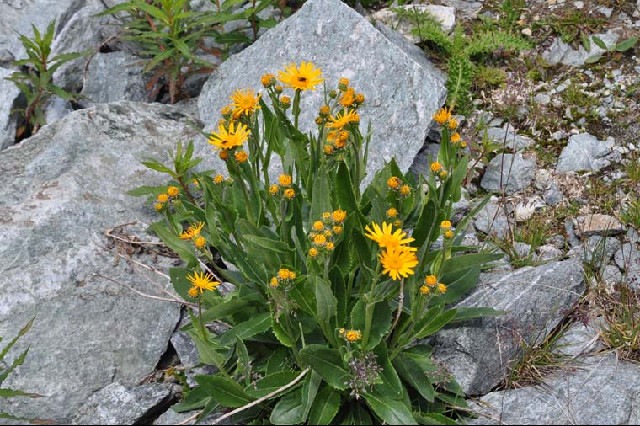
Phyteuma hemisphaericum
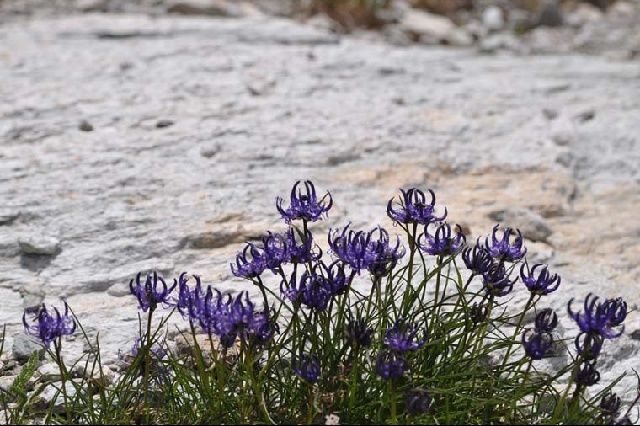
Gentiana ?bavarica – always growing in very wet sites at the edge of streams

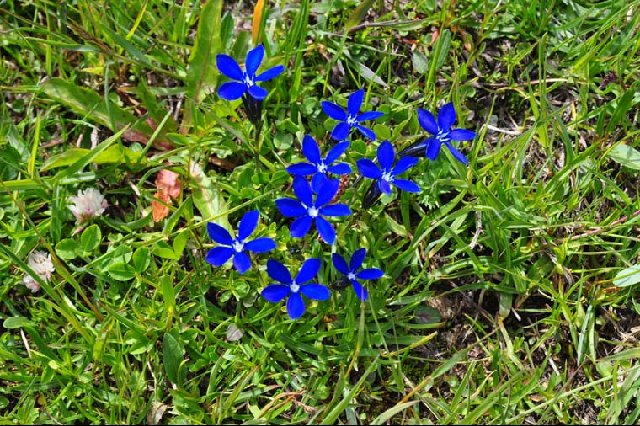
A typical alpine scene
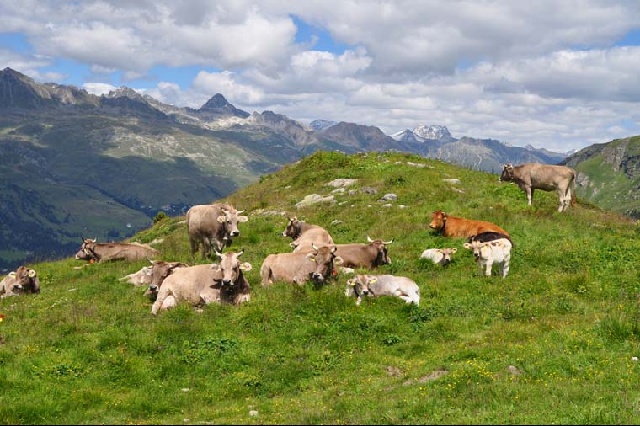
Hedysarum hedysaroides
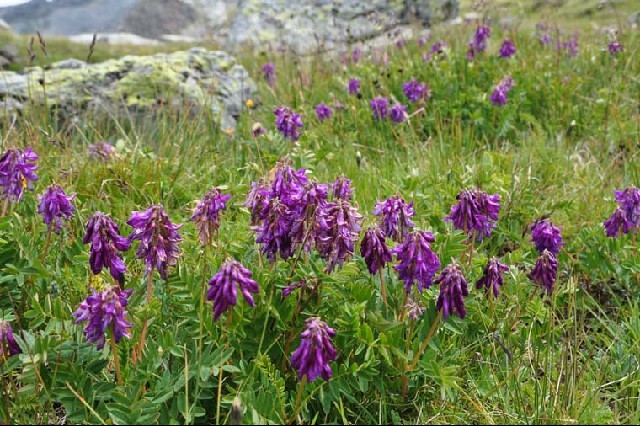
And finally, some natural crevice gardens with Saxifraga paniculata and Sempervivum montanum
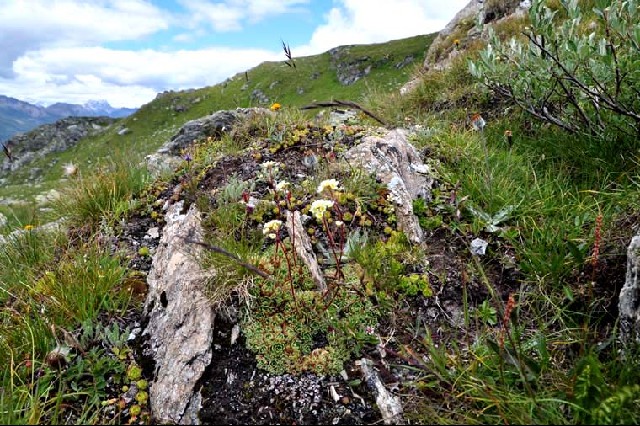
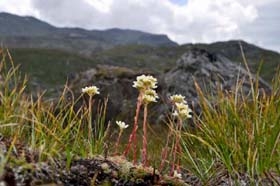
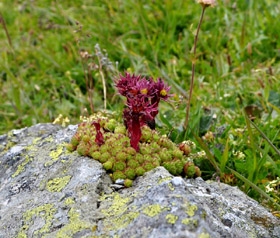
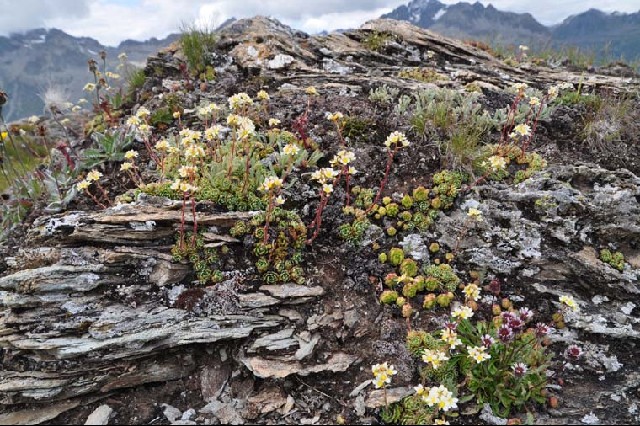
When we reached Furtschellas at 2312m we took the cable car back down to the bottom at Sils, from where we took two buses to get back to Pontresina.
to be continued